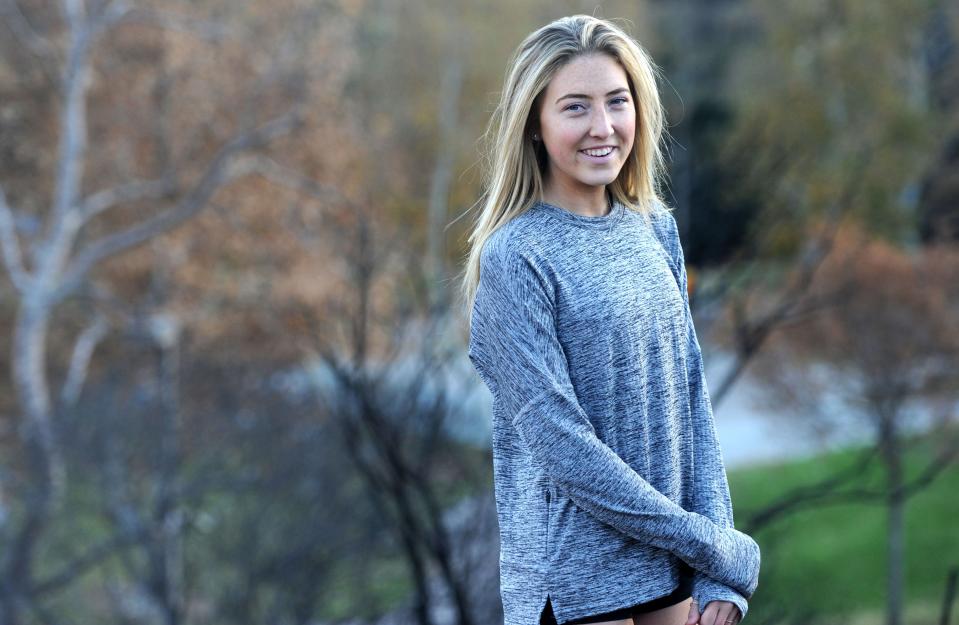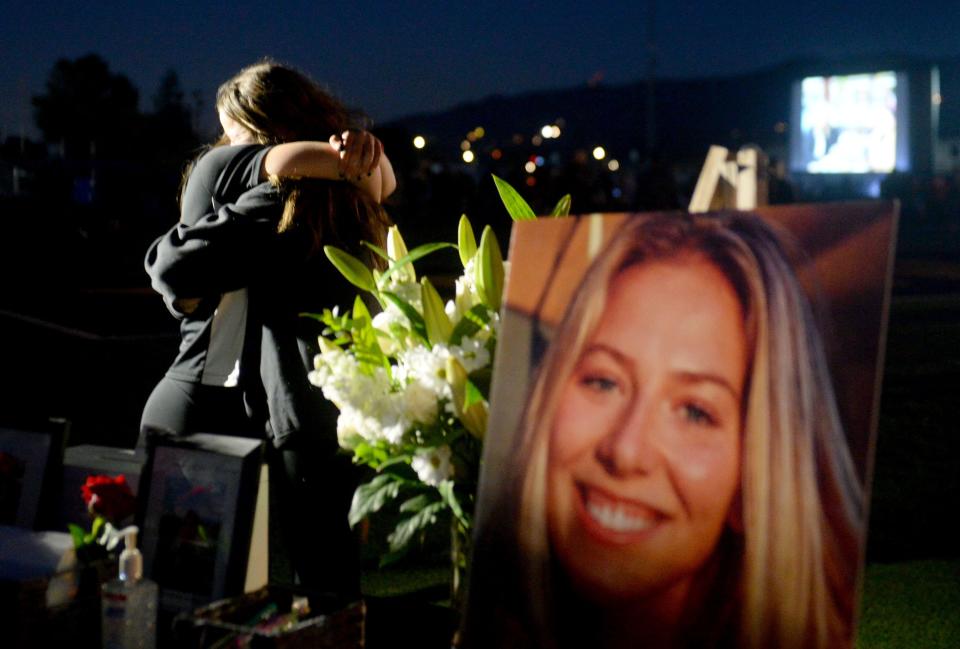Kendall Stanley: Sad days ahead
The stories pop up regularly — young people apparently with their whole, accomplished lives ahead of them, commit suicide.
Last week it was University of Wisconsin running standout Sarah Shulze who took her own life.
Her family said she committed suicide after “balancing athletics, academics and the demands of everyday life overwhelmed her in a single, desperate moment.”
She was 21.

Last month it was Katie Meyer, 22, star goalkeeper on Stanford University’s women’s soccer team.
According to a story on "NBC News," suicide is the second-leading cause of death for college students, according to the American Foundation of Suicide Prevention. In 2020 it was among the top nine leading causes of death for people ages 10-64 and was the second leading cause of death for people 10 to 14 and 25-34 according to data from the Centers for Disease Control and Prevention.
The New York Times last Sunday started a look at the teen mental health problem and it is eye-opening to say the least.

Drinking and teen pregnancy are now the least of parents’ worries.
“Three decades ago, the gravest public health threats to teenagers in the United States came from binge drinking, drunken driving, teenage pregnancy and smoking,” the story noted. “These have since fallen sharply, replaced by a new public health concern: soaring rates of mental health disorders.
“In 2019, 13 percent of adolescents reported having a major depressive episode, a 60 percent increase from 2007. Emergency room visits by children and adolescents in that period also rose sharply for anxiety, mood disorders and self-harm. And for people ages 10 to 24, suicide rates, stable from 2000 to 2007, leaped nearly 60 percent by 2018, according to the Centers for Disease Control and Prevention.”

Certainly the COVID-19 pandemic did nothing to help those statistics, but they were increasing before the pandemic and cover all ethnic, racial, economic and urban and rural areas.
The Times looked at one family where M, 13, spiraled down and down, taking to cutting and other self-harm. Her parents, like many before them, sought help from many different therapists and counselors and she was finally doing better in school and mentally.
But a hurtful text from a friend at the end of the school year sent her plummeting back into darker places. She has since come back from that episode.
If you’re M’s parent, vigilance is an everyday concern.
More: Kendall Stanley: Spring better get its act together
More: Kendall Stanley: The horrors of Ukraine
More: Kendall Stanley: Driving on down the highway
One can wonder if young people seeing others their age committing suicide, somehow feel that it is an acceptable way to deal with life’s ups and downs.
And it’s not just young people having issues these days.
The same issue of the Times had a story on how after the pandemic there remains a large reserve of loneliness among New Yorkers who previously had been out and about, socially connected, eager to take on the joys of city living.
As the story noted, “New York City, where one million people live alone, was for two years an experiment in loneliness: nine million people siloed with smartphones and 24/7 home delivery, cut off from the places where they used to gather. Therapists were booked up, even as tens of thousands of New Yorkers were grieving for a best friend, a spouse, a partner, a parent.
There’s a reason that loneliness is such a bummer according to the same story.
“The human brain, having evolved to seek safety in numbers, registers loneliness as a threat. The centers that monitor for danger, including the amygdala, go into overdrive, triggering a release of “fight or flight” stress hormones. Your heart rate rises, your blood pressure and blood sugar level increase to provide energy in case you need it. Your body produces extra inflammatory cells to repair tissue damage and prevent infection, and fewer antibodies to fight viruses. Subconsciously, you start to view other people more as potential threats — sources of rejection or apathy — and less as friends, remedies for your loneliness.
“And in a cruel twist, your protective measures to isolate you from the coronavirus may actually make you less resistant to it, or less responsive to the vaccine, because you have fewer antibodies to fight it.”
Even without full-blown loneliness I think there is a general malaise in the land. After reading all the books you always wanted to read, after baking enough bread to fill a bakery, after logging on to Zoom for work or chats with friends and co-workers, it has become hard to get back out, off your behind and fighting to get back to “normal.”
Do we know what that “normal” will be? Nope, but we will probably get used to it whatever it is — we as humans are a fairly flexible and changeable lot.
And that’s a good thing.
— Kendall P. Stanley is retired editor of the News-Review. He can be contacted at kendallstanley@charter.net. The opinions expressed in this column are those of the writer and not necessarily of the Petoskey News-Review or its employees.
This article originally appeared on The Petoskey News-Review: Kendall Stanley: Sad days ahead

